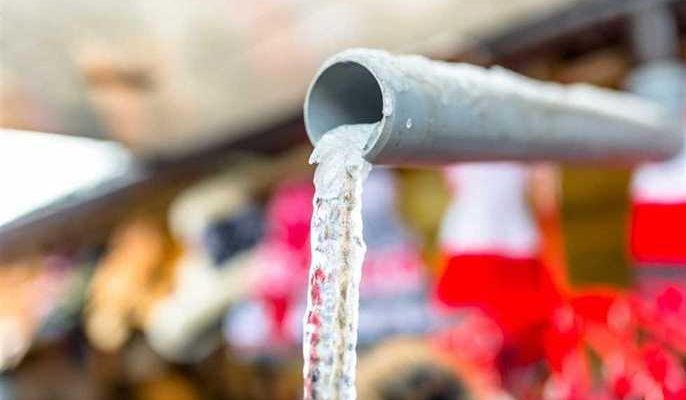Frozen pipes and water damage Columbus are a serious issue that you can prevent. Even a minute crack in a pipe can release hundreds of gallons of water, resulting in flooding, furnace damage, ruined fence planters, and structural damage. It also puts you at immediate risk of mold growth.
Families are affected by frozen water pipes each year in both cold and warm climates. You can help reduce the possibility of frozen water pipes and related property damage by implementing the precautionary procedures listed below.
How to prevent freezing pipes?
- Keep the temperature at 65℉ or above throughout the day and night. Ensure all internal doors are open to allow warm air to circulate freely.
- Drain and turn off any outside water source. Install frost-proof spigots or use faucet insulators to prevent them from freezing.
- You have to insulate outside walls that contain pipes. Consider reinsulating or using spray foam to increase protection if you observe moisture or mold or if your walls feel cold and also to increase the probability of retaining walls.
- In unheated locations, use snap-on insulation for pipes. You can also utilize heated plumbing tape or cable that automatically turns on as temperatures drop below freezing.
- Install innovative technologies like temperature sensors, smart thermostats, backup generators, and water leak detection systems.
What to do if pipes freeze?
When pipes freeze, they may not always burst. Keep the following in mind:
Call a plumber if needed.
If nothing comes out when you turn on the faucets, leave them on and call a plumber.
Avoid the use of appliances near water.
In situations where there is standing water, do not use electrical equipment. You may be electrocuted.
Avoid applying flames to thaw pipes.
Never use a torch or other open flame to thaw a pipe because this can constitute a fire danger.
Use a hairdryer as a possible heat source.
You might be able to use a hairdryer to thaw a frozen pipe, but make sure you’re not standing in water. Begin by warming the pipe as close to the faucet as feasible, then work your way to the coldest portion.
Shut off the water supply.
Switch off the water at the main shutoff valve in the house if your water pipes have already broken. Ensure that everyone in your household knows where the water shut down valve is located and how to operate it. Make sure to leave the water faucets turned on.
Preventing Frozen Pipes While You’re Away
If you’re going somewhere else for the winter, don’t forget to winterize your house. Take precautions to prevent pipes from freezing before you depart, such as:
Adjust the thermostat
Replace the batteries in your thermostat and set the temperature at a minimum of 55° F.
Ask for assistance
Ask a friend or nearby people to come over and check on your house to see if it’s warm enough to prevent freezing.
Switch off the water supply
Switch off the water and drain the system. Keep in mind that your sprinkler system and fire protection may be switched off when you turn off the water, so take necessary precautions.
Permanent Pipe Freezing Protection Solution
Insulating places such as attics, basements, and other crawl spaces is a long-term approach to keep pipes from freezing. Pipe insulation is a relatively inexpensive procedure that can protect your pipes even if your environment does not frequently experience cold temperatures. Wrapping pipes in heat tape or heat cables and controlling the temperature with a thermostat can prevent pipes from freezing in the long run.
Final Thoughts
As the frozen water expands and breaks the copper or plastic tubing, it can cause leaks. You will have little to no water supply if this happens, but when the pipes thaw out, you may have significant leaks to deal with or worse. If the damage is severe or you cannot repair the problem yourself, it is recommended to call a professional.










[…] expands as it freezes due to low temperatures. Due to freezing and subsequent expansion, plumbing pipes crack and burst, causing significant damage. The best way to avoid this calamity is to drain water […]